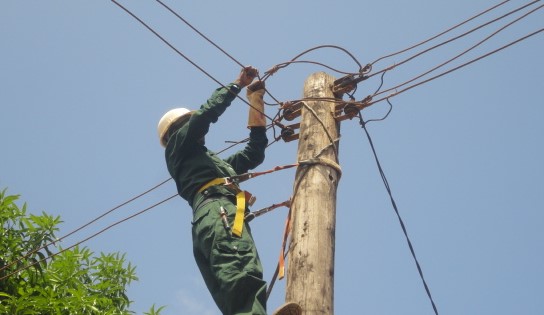A safer, smarter Tanzania: Building a future where safety is every worker’s right

Services continue to be provided at the OSHA pavilion, which is the host of the World Day for Safety and Health at Work exhibitions being held nationally in Singida Region, at the Mandewa Celebration Grounds, from April 24 to 30, 2025.
What you need to know:
- OSHA’s core mission is to promote safe and healthy working conditions across all sectors from heavy industry and agriculture to public offices and informal sectors.
How OSHA Tanzania is transforming safety into a strategic investment for national growth
As Tanzania joins the global community in marking the World Day for Safety and Health at Work, the message for 2025 is sharper than ever a safe and healthy workplace is not a privilege it is a fundamental human right. Every year on April 28, this global commemoration serves as a reminder and a rallying point to reflect, recommit, and renew national efforts towards safer work environments.
This year’s theme, “Revolutionizing Health and Safety: The Role of AI and Digitalization at Work,” calls on countries to look beyond traditional compliance and embrace innovation in how workplace safety is understood, enforced, and improved. In Tanzania, this revolution is already underway driven by the tireless efforts of the Occupational Safety and Health Authority (OSHA).
OSHA Tanzania: Pioneering Safety through Innovation
Established under the Occupational Safety and Health Act No. 5 of 2003, OSHA Tanzania has spent over two decades at the helm of workplace safety regulation and education. As a government agency operating under the Prime Minister’s Office Labor, Youth, Employment and Persons with Disabilities, OSHA’s core mission is to promote safe and healthy working conditions across all sectors from heavy industry and agriculture to public offices and informal sectors.
From the manufacturing plants of Dar es Salaam to the bustling construction sites in Arusha and the farming communities of Morogoro, OSHA has worked to ensure that safety is not just a document or a poster on the wall, it is a living practice embedded in daily operations.
In 2023/2024 fiscal year alone, OSHA conducted a total of 23,712 general inspections and 331,874 specific inspections, providing both enforcement and technical guidance. These inspections have led to measurable improvements in fire preparedness, chemical handling, emergency protocols, and the consistent use of personal protective equipment (PPE). But beyond inspections, OSHA is steering Tanzania toward a culture of prevention and increasingly, that culture is being powered by technology.
Embracing the Digital Shift in Safety
In step with the 2025 global theme, OSHA Tanzania has begun integrating digital tools to modernize how it delivers on its mandate. The authority has adopted electronic inspection systems, digital registration portals, and online training platforms that make it easier for both employers and workers to access critical safety resources.
These tools are improving efficiency, transparency, and accessibility. Employers can now submit compliance documents online, receive inspection reports digitally, and participate in remote training all without needing to travel to OSHA offices. For workers in remote or underserved areas, this is a game changer.
OSHA is also exploring the potential of AI-driven risk assessment tools, which can help identify workplace hazards more accurately and in real time. Through pilot programmes, the authority is testing how data analytics can predict safety guideline violations before they occur allowing for preventative interventions instead of reactive enforcement.
This shift is not about replacing human oversight, it’s about augmenting safety systems with smarter, faster, and more precise tools that can respond to the complexity of modern work environments.
Building a Safety-First Culture through Training and Awareness
Training remains at the heart of OSHA’s strategy. Over the past financial year, more than 21,000 workers and safety officers have been trained through OSHA-certified programs. These sessions cover everything from hazard identification to emergency response and the proper use of machinery and chemicals.
Public awareness campaigns have also scaled up significantly, with OSHA using newspapers, radio, television, social media, and community engagement to spread vital messages. These campaigns focus on both employers and employees, making health and safety a shared value rather than a top-down directive.
Digitalization has further expanded the reach of these programs. With e-learning modules and virtual workshops, OSHA is able to engage businesses and workers in even the most remote parts of the country bridging the gap between regulations and reality.

OSHA Chief Executive, Ms. Khadija Mwenda
Reaching the Informal Sector: Tanzania’s New Safety Frontier
Despite the progress in formal sectors, the informal economy, which makes up more than 80% of Tanzania’s workforce, remains OSHA’s most pressing challenge. Here, workers often operate without formal contracts, safety gears, or basic training. These include boda-boda riders, small-scale miners, market vendors, domestic workers, and street food operators.
To address this, OSHA has launched community-based outreach programs that deliver safety information in Swahili and local dialects, often through village meetings, ward offices, and religious institutions. The messaging is simple, relatable, and actionable focusing on how workers can protect themselves using affordable, practical methods.
In the coming years, OSHA plans to integrate informal workers into its registration and digital support systems, making it easier for small businesses to access training and comply with basic safety requirements without being overwhelmed by bureaucracy.

A view of part of the pavilions at the World Day for Safety and Health at Work exhibitions being held nationally in Singida Region, at the Mandewa Celebration Grounds, from April 24 to 30, 2025.
Safety as a Strategic Investment
Today, compliance with OSHA regulations is no longer seen as a bureaucratic checkbox, it has become a strategic business decision. Tanzanian companies that prioritize occupational safety and health are reporting fewer workplace incidents, higher employee morale, and stronger performance overall.
In high-risk sectors such as mining, construction, manufacturing and logistics, several firms have reported significant level reduction in workplace accidents after adopting OSHA’s recommendations. This proves that complying with occupational safety and health requirements is not a cost but rather an investment in people and productivity.
Following OSHA’s great job in promoting safety and health in Tanzania, businesses are increasingly embedding health and safety into their operational models, not just to meet legal standards, but to attract talent, reduce turnover, and compete in international markets.
Aligning With Global Standards, Looking to the Future
OSHA’s work aligns closely with International Conventions such as ILO Convention No. 155 on Occupational Safety and Health, as well as the United Nations Sustainable Development Goals (SDGs), particularly Goal 8: Decent Work and Economic Growth.
With support from development partners, OSHA is also investing in research and innovation to address emerging hazards from ergonomics and noise pollution to AI ethics and human-machine interaction in automated workspaces.
As Tanzania’s economy modernizes, OSHA is determined to ensure that technology enhances human dignity, not endangers it.
The Road Ahead: Shared Responsibility in a Changing World
This year’s global theme is not just about machines, it’s about rethinking how we keep workers safe in a digital age. As OSHA deepens its digital transformation, it continues to emphasize that true safety comes from collaboration. Employers must lead by example, employees must stay informed and engaged, and institutions must remain adaptive and responsive.
Tanzania’s progress in workplace safety is real, but the work is far from done. The informal sector must be fully included. Safety education must start early in schools and vocational centers and awareness must penetrate even the most remote communities.
The vision is bold but achievable, a Tanzania where every worker, regardless of location or status, returns home safe and healthy each day. OSHA is not just regulating that future, it is building it.
As we mark this year’s observance, let it be more than a date on the calendar. Let it be a turning point. Because safety is not just a goal. It is a right. And in Tanzania, that right is being revolutionized.


